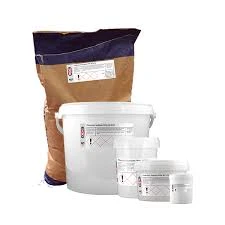
Understanding Food Processing Additives and Preservatives for Enhanced Shelf Life and Safety
Additives and Preservatives Used in Food Processing
In the modern culinary landscape, food additives and preservatives play a pivotal role in enhancing the quality, safety, and shelf-life of food products. As consumer demands for convenience and variety have risen, so too has the reliance on these substances in the food processing industry. Understanding the types of additives and preservatives, along with their purposes and potential effects on health, is essential for both consumers and manufacturers.
Food additives are substances added to food to achieve specific objectives, such as improving flavor, texture, appearance, or nutritional value. They can be classified into several categories, including flavor enhancers, color additives, emulsifiers, thickeners, and sweeteners. Each category serves a particular function for instance, flavor enhancers like monosodium glutamate (MSG) are used to intensify the natural flavors of foods, while thickeners such as xanthan gum provide desired textures in sauces and dressings.
Preservatives, on the other hand, are a subset of food additives specifically designed to prevent spoilage and extend the shelf life of food products. They inhibit the growth of microorganisms that can cause foodborne illnesses and help maintain the quality of food over time. Common preservatives include sorbates, benzoates, and sulfites, which can be found in a variety of processed foods, from baked goods to dairy products.
The use of these additives and preservatives has sparked debates around health implications. Some consumers have raised concerns about potential allergic reactions, sensitivities, and links to chronic health conditions. For example, artificial colors and certain preservatives have been associated with hyperactivity in children, prompting some parents to seek out additive-free alternatives. Consequently, many food manufacturers are responding to consumer concerns by reformulating products and using natural alternatives wherever possible.
additives and preservatives used in food processing

Natural preservatives, derived from plants or other natural sources, are gaining popularity as consumers seek cleaner labels. For instance, vinegar, lemon juice, and rosemary extract can be used to preserve foods while also appealing to health-conscious shoppers. These natural options are perceived to be safer and may offer additional health benefits. However, they sometimes come with trade-offs in terms of effectiveness and shelf-life.
Regulatory organizations, such as the U.S. Food and Drug Administration (FDA) and the European Food Safety Authority (EFSA), closely monitor the use of food additives and preservatives. They establish acceptable daily intake levels and conduct safety assessments to ensure that these substances do not pose significant risks to public health. Labels on food products often indicate whether preservatives are present, helping consumers make informed choices.
Despite regulatory oversight, the debate over the safety of food additives and preservatives continues. Education is vital in empowering consumers to understand what these ingredients are and how they affect their health. Awareness of the various categories and functions of additives allows individuals to make better dietary choices.
As the food industry continues to evolve, the reliance on additives and preservatives remains significant. Advances in food science and technology may lead to the development of new and safer alternatives that cater to health-conscious consumers while maintaining food quality and safety. Ultimately, being knowledgeable about food additives and preservatives, along with their benefits and potential risks, can help consumers navigate the complexities of processed foods, making choices that align with their health, dietary preferences, and ethical considerations.
As we move towards a future where sustainable and healthy food options are prioritized, the role of additives and preservatives will certainly be front and center in discussions about food production, safety, and nutrition.
-
The Safety Challenges of Ammonium Nitrate FertilizerNewsJun.26,2025
-
The Critical Role of Mining ChemicalsNewsJun.26,2025
-
Shelf Life of Glacial Acetic Acid Food GradeNewsJun.26,2025
-
Enhancing PVC Longevity with 1,2,3-Benzotriazole InnovationsNewsJun.26,2025
-
China’s Dominance in Food Additive ProductionNewsJun.26,2025
-
Can Aluminum Hydroxide Replace More Toxic Alternatives?NewsJun.26,2025
-
PE and PP Plastics with Benzotriazole AdditivesNewsJun.12,2025
Hebei Tenger Chemical Technology Co., Ltd. focuses on the chemical industry and is committed to the export service of chemical raw materials.
-

view more DiethanolisopropanolamineIn the ever-growing field of chemical solutions, diethanolisopropanolamine (DEIPA) stands out as a versatile and important compound. Due to its unique chemical structure and properties, DEIPA is of interest to various industries including construction, personal care, and agriculture. -

view more TriisopropanolamineTriisopropanolamine (TIPA) alkanol amine substance, is a kind of alcohol amine compound with amino and alcohol hydroxyl, and because of its molecules contains both amino and hydroxyl. -

view more Tetramethyl Thiuram DisulfideTetramethyl thiuram disulfide, also known as TMTD, is a white to light-yellow powder with a distinct sulfur-like odor. It is soluble in organic solvents such as benzene, acetone, and ethyl acetate, making it highly versatile for use in different formulations. TMTD is known for its excellent vulcanization acceleration properties, which makes it a key ingredient in the production of rubber products. Additionally, it acts as an effective fungicide and bactericide, making it valuable in agricultural applications. Its high purity and stability ensure consistent performance, making it a preferred choice for manufacturers across various industries.











